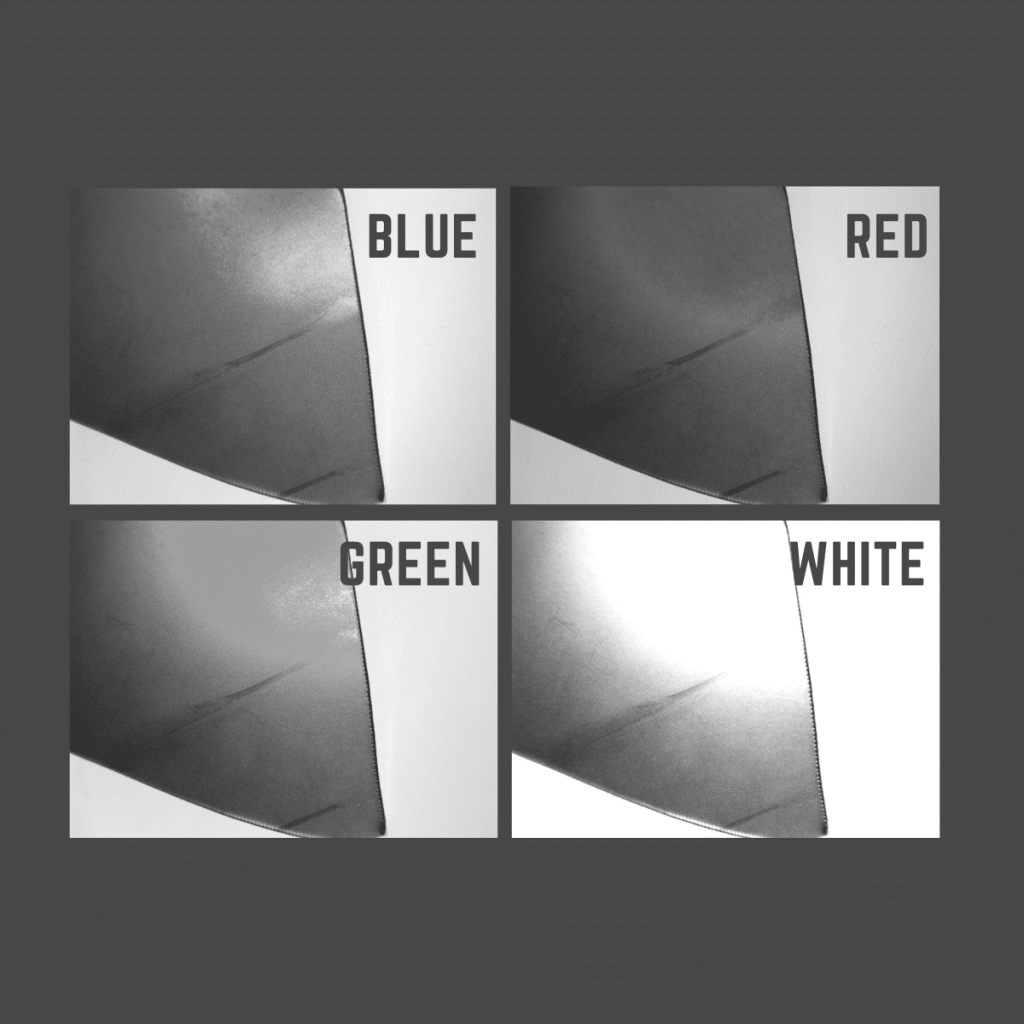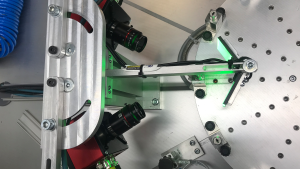Machine Visionas a solution to the shortage of skilled workers?
Solutions for medium-sized businesses

If you work a lot with Machine Vision, there’s one big topic you can’t avoid: light. Choosing the right light is often the most important decision and sometimes also the most difficult and costly step when purchasing an image processing system.
One point that is often neglected in the choice of light, but is not so unimportant, is the color of the light. Why is that the case? This is exactly what we want to present to you today.
There are different colors of light, e.g. red, green, blue and white light, and each has its own properties that can significantly affect the outcome of Machine Vision. Light is made up of different wavelengths, and each light color represents a specific wavelength range. Red light, for example, has a longer wavelength than blue light. These differences in wavelength can affect how light interacts with objects and how images are captured.
The main difference between the various colors of light is their ability to penetrate objects or be reflected by them. Red light, for example, is less likely to penetrate an object than blue or green light. White light, on the other hand, contains all the colors of the spectrum and is therefore ideal for capturing detailed images with high color accuracy.
But why does it matter what color of light we use when we take pictures that need to be processed? Let’s take the use case of crack detection on a metal surface. By using different colors of light, we can highlight different aspects of the cracks that are not visible to the naked eye. For example, blue light can help to highlight the edges of cracks, while red light can help to emphasize irregularities in the surface. By carefully selecting the right light color for the task at hand, we can capture images that provide a more accurate and detailed representation of the object under examination.
In summary, it can be said that knowledge of the different light colors and their properties is essential for achieving optimal results in Machine Vision. By carefully selecting the right color of light for the task at hand, we can capture images that provide a more accurate representation of the object being analyzed, ultimately leading to better decision making and better results.
Other contributions:

Release Update V5.4.0
The release update V5.4.0 is here! A major dashboard update, minor bug fixes and the integration of persistent variables are included.

Finally: The new VIU2 PoE camera is here!
The VIU2 PoE camera is here! You can find out why PoE is an important feature in this article.

Finally: The new VIU2 PoE camera is here!
The VIU2 PoE camera is here! You can find out why PoE is an important feature in this article.

